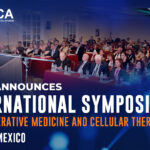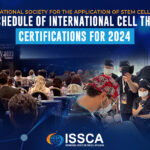How does the U.S. FDA regulate cell therapies? (351 vs 361 Products)
In the United States, cellular therapies are regulated by the FDA’s Office of Cellular, Tissue, and Gene Therapies (OCTGT) within the FDA Center for Biologics Evaluation and Research (CBER).
According to the FDA, the Center for Biologics Evaluation and Research (CBER) regulates:
Cellular therapy products
Human gene therapy products
Certain devices related to cell and gene therapy
CBER uses both the Public Health Service Act and the Federal Food Drug and Cosmetic Act as enabling statutes for oversight.
In the U.S., human tissues intended for transplantation are regulated by the FDA as “Human cells, tissues and cellular and tissue-based products” or “HCT/Ps.” Under U.S. law, any company that engages in the collection, processing, storage, screening/testing, packaging, or distribution of HCT/Ps must register with the FDA.
351 vs. 361 Products
Currently, the FDA’s Center for Biologics Evaluation and Research (CBER) is responsible for regulating HCT/Ps and it has two different paths for cell therapies that it constructed to reflect what it considers to be “relative risk”. These pathways are commonly called “361” and “351” products.
Cell therapies can potentially be regulated under either pathway, as described below:
361 Products
361 products that meet all the criteria outlined in 21 CFR 1271.10(a) are regulated as HCT/Ps and are not required to be licensed or approved by the FDA. These products are called “361 products,” because they are regulated under Section 361 of the Public Health Service (PHS) Act.
351 Products
In contrast, if a cell therapy product does not meet all the criteria outlined in 21 CFR 1271.10(a)), then it is regulated as a “drug, device, or biological product” under the Federal Food, Drug, and Cosmetic Act (FDCA) and Section 351 of the PHS Act. These 351 products require clinical trials to demonstrate safety and efficacy in a process that is nearly identical to that what is required for pharmaceutical products to enter the marketplace.
Human gene therapy products
Certain devices related to cell and gene therapy
CBER uses both the Public Health Service Act and the Federal Food Drug and Cosmetic Act as enabling statutes for oversight.
In the U.S., human tissues intended for transplantation are regulated by the FDA as “Human cells, tissues and cellular and tissue-based products” or “HCT/Ps.” Under U.S. law, any company that engages in the collection, processing, storage, screening/testing, packaging, or distribution of HCT/Ps must register with the FDA.
351 vs. 361 Products
Currently, the FDA’s Center for Biologics Evaluation and Research (CBER) is responsible for regulating HCT/Ps and it has two different paths for cell therapies that it constructed to reflect what it considers to be “relative risk”. These pathways are commonly called “361” and “351” products.
Cell therapies can potentially be regulated under either pathway, as described below:
361 Products
361 products that meet all the criteria outlined in 21 CFR 1271.10(a) are regulated as HCT/Ps and are not required to be licensed or approved by the FDA. These products are called “361 products,” because they are regulated under Section 361 of the Public Health Service (PHS) Act.
351 Products
In contrast, if a cell therapy product does not meet all the criteria outlined in 21 CFR 1271.10(a)), then it is regulated as a “drug, device, or biological product” under the Federal Food, Drug, and Cosmetic Act (FDCA) and Section 351 of the PHS Act. These 351 products require clinical trials to demonstrate safety and efficacy in a process that is nearly identical to that what is required for pharmaceutical products to enter the marketplace.







